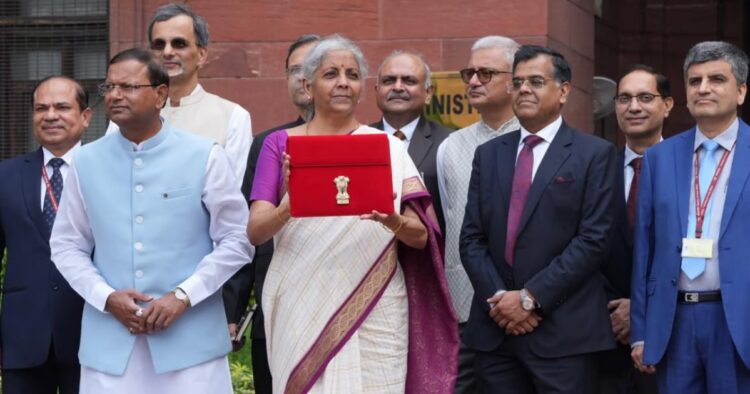The Indian Ministry of Defence (MoD) has received a substantial allocation of over ₹6.21 lakh crore (approximately $75 billion) in the Union Budget for the Financial Year (FY) 2024-25. This is the largest budget allocation among all ministries, reflecting the government’s strong commitment to national security and defense capabilities.
Increased Investment in Innovation and Technology
As part of this year’s budget, the government has added an extra ₹400 crore to promote innovation in defense technology through the iDEX (Innovations for Defence Excellence) scheme. This funding, known as the ADITI (Acing Development of Innovative Technologies with iDEX) scheme, is aimed at supporting start-ups, small and medium enterprises (MSMEs), and innovators.
The scheme offers grants covering up to 50% of the product development budget, with a maximum limit of ₹25 crore per applicant. This initiative is expected to drive advancements in defense technology and provide the Indian military with cutting-edge solutions.
The total allocation for the Ministry of Defence for FY 2024-25 represents a significant increase of approximately ₹1 lakh crore (18.43%) compared to FY 2022-23, and 4.79% more than the allocation for FY 2023-24. This funding will be divided among various needs: 27.66% for capital expenditure, 14.82% for revenue expenses related to operational readiness, 30.66% for pay and allowances, 22.70% for defense pensions, and 4.17% for civil organizations under the MoD. This allocation is about 12.90% of the total Union Budget.
Focus on Modernization and Job Creation
A key focus of this budget is the modernization of the armed forces. Out of the total defense allocation, ₹1.72 lakh crore is dedicated to capital expenditure, representing a 20.33% increase from FY 2022-23 and 9.40% more than FY 2023-24. This funding is aimed at acquiring advanced technology and equipment, including fighter jets, ships, submarines, and drones. The increased budget will help fill critical capability gaps and equip the armed forces with state-of-the-art technology.
The MoD has allocated 75% of its modernization budget, amounting to ₹1.05 lakh crore, for procurement through domestic industries. This move is expected to stimulate economic growth, create jobs, and enhance capital formation within the country.
Operational readiness remains a priority, with ₹92,088 crore allocated for this purpose, marking a 48% increase from FY 2022-23. This funding will support maintenance, procurement of ammunition, and other operational needs, ensuring that the armed forces are well-prepared for any situation.
Support for Veterans and Strategic Infrastructure
The budget also emphasizes support for veterans, with ₹6,968 crore allocated to the Ex-Servicemen Contributory Health Scheme (ECHS), a 28% increase from the previous year. Additionally, significant funds will be directed towards strategic infrastructure projects in border areas, including the Nyoma Airfield in Ladakh and various tunnels and bridges in strategic locations.
The Indian Coast Guard’s budget for FY 2024-25 has been increased to ₹7,651.80 crore, with a focus on capital expenditure to enhance maritime capabilities. The Defence Research and Development Organisation (DRDO) will receive ₹23,855 crore, up from the previous year’s allocation, to support research and development of new technologies.
ALSO READ: “Budget 2024: After Government Hikes Tax On Capital Gains, Sensex, Nifty Decline”
Increased Funding for iDEX and Technology Development
Funding for iDEX has been significantly increased to ₹518 crore, aimed at supporting start-ups and innovators in developing defense technologies. The Technology Development Fund (TDF) will also see increased support, providing ₹60 crore to attract young innovators and collaborate with DRDO.
Finally, the allocation for defense pensions stands at ₹1,41,205 crore, a 2.17% increase from FY 2023-24. This funding will cover pensions for approximately 32 lakh pensioners, ensuring timely and adequate support.
This comprehensive budget underscores the government’s commitment to enhancing defense capabilities, supporting innovation, and fostering economic growth through strategic investments in defense and related sectors.

















Comments